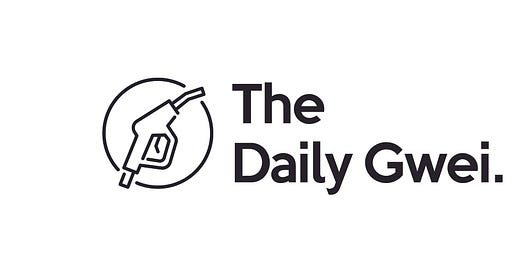The Holy Grail of Stablecoins - The Daily Gwei #159
Can we create the perfect decentralized stablecoin?
Outside of Bitcoin and Ethereum the hottest thing in crypto is most definitely stablecoins. We’ve seen plenty of stablecoins pop up over the years from BitShares to Tether to Dai and now to a whole new breed of “algorithmic stablecoins” that aren’t actually stable (yet?). Just today yet another project was announced called Fei Protocol that aims to create a truly decentralized algorithmic stablecoin (that is actually stable).


You can read the above Medium article for the full breakdown of how Fei Protocol works but the tl;dr is that it uses different automated mechanisms and logic in order to maintain its peg to 1 US dollar. Though the key difference between Fei and some of the other algorithmic stablecoins is that it doesn’t seem to rely on extreme speculation order to achieve stability - it instead uses a novel bonding curve mechanism.
The holy grail of the stablecoin world is to create one that satisfies 3 key properties - it needs to be fully decentralized, scalable and stable. There have been many attempts over the years to achieve this with the largest and most used decentralized stablecoin being Dai from Maker. Though unfortunately, in order for Dai to scale, it needs to use centralized collateral such as USDC and WBTC which means that Dai isn’t actually a fully decentralized stablecoin anymore. Dai also suffers from losing its peg sometimes due to various circumstances but I’d say this isn’t really a deal-breaker as it does tend to return to its peg eventually.
We also have a host of centralized stablecoins within DeFi that have exploded in growth over the last couple of years such as USDT and USDC. Obviously, both of these keep their peg very well because they are backed 1:1 by dollars in a bank account (well, USDT might not be but the market seems to believe that it is). These stablecoins are also easy to scale and don’t rely on any fancy mechanisms or collateral requirements outside of the 1:1 backing. Where things like USDT and USDC fail though is that 3rd and ever important property - they are not decentralized. This means that their use within DeFi actually represents a systemic risk because, as an example, the U.S. government could force the issuer of USDC (Circle/Coinbase) to freeze USDC that’s sitting in MakerDAO which would mean that 40% of the collateral backing Dai would become instantly worthless (unless the freeze was undone later).
I do believe that eventually we will get to a point where we have a stablecoin that meets all of the 3 properties that I mentioned above but it’s going to take a lot of experimentation to get there. I also wouldn’t rule out the current crop of successful stablecoins like Dai just because its semi-decentralized today - it can evolve and become more decentralized over time.
Have a great day everyone,
Anthony Sassano
Join the Daily Gwei Ecosystem
All information presented above is for educational purposes only and should not be taken as investment advice.





Thank you. What is your opinion on which model succeeds ? Tokenized, Synthetic collateralized, synthetic algorithmic ? A combination ?
What are your thoughts on DSD? It looks to have become (reasonably) stable even with only a small base?